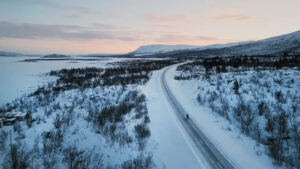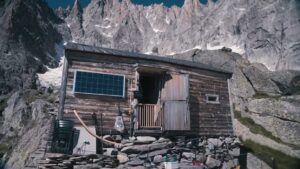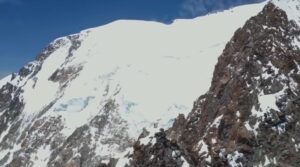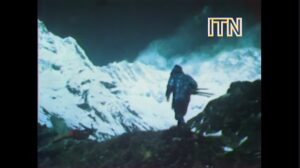Erik Grankvist was 17, living in Stockholm, Sweden, and feeling lost. But after a chance viewing of Alone in the Wilderness — that classic documentary about Dick Proenneke — Grankvist thought he’d found a path. Like Proenneke, the youngster decided to venture into trackless forest to build a cabin.
Using hand tools. On his own.
After turning 18, Grankvist set out on his Thoreau-like quest. Although he didn’t originally intend to meticulously film every aspect of his cabin’s construction, he’d received a GoPro for his birthday, and decided he might as well use it.
Three years later, Grankvist’s feature-length documentary stands as an incredible testament to his physical strength, mental fortitude, and obsessive documentarian instincts.
Forest sounds
I Spent 3 Years Alone Building a Log Cabin doesn’t feature any narration, voice-over, or talking at the camera. It’s hard to decide if that’s a stylistic choice or if Grankvist was simply too exhausted by his backbreaking labors to talk.
The work on display is simultaneously monumental and meticulous. Grankvist sets his camera up on a tripod and lets it run as he digs and hauls stones for a foundation, fells and debarks trees, and painstakingly fits every log together.

Laying a stone foundation by hand. Photo: Screenshot
The soundtrack is the gentle hum of insects and the call of birds overhead. No gasoline-powered tools mar the pristine soundscape.
To fell his trees, Grankvist turns to axe and saw. To get them to his build site, he rolls the massive trees over smaller logs one foot at a time.

Splitting logs the old fashioned way. Photo: Screenshot
To split the logs, he uses a homemade wooden mallet and hand-whittled wedges. He builds his own sawhorses and uses the most basic of physics tricks to haul logs to the top of his increasingly higher walls.
Things take shape
Grankvist manages to make a surprising little nature film along the way. According to the description of his video, he upgraded his camera gear at some point in his three-year construction process, and it shows. His lens captures owls, kit foxes, dreamy sunrises, and peaceful sunsets. And all the time, rain or shine, he works on the cabin.
Soon enough, a dwelling begins to take shape. Grankvist cuts windows and doors, then turns his attention to the roof. As the seasons flow from fall to winter to spring and back again, Grankvist’s body visibly leans and tightens. His hair grows out. He gets a dog. He digs a root cellar and seals his roof against the elements with clay and birch bark.

Grankvist used traditional cooking methods to feed himself while building his cabin. Photo: Screenshot
When he finally moves from his sagging tent into the partially completed structure, it feels like a major triumph. In a way, it’s the culmination of thousands of years of ingenuity and knowledge passed down from generation to generation, once via word of mouth and now, interestingly enough, through the medium of YouTube.

A man who has just finished three years of hard work takes a well-deserved break. Photo: Screenshot
“It is a long story…of hard work, pain, cold, making many, many mistakes and figuring out how to solve problems all alone by trial and error,” Grankvist writes in his video’s description.
“But I finally built the cabin all alone after three years.”






